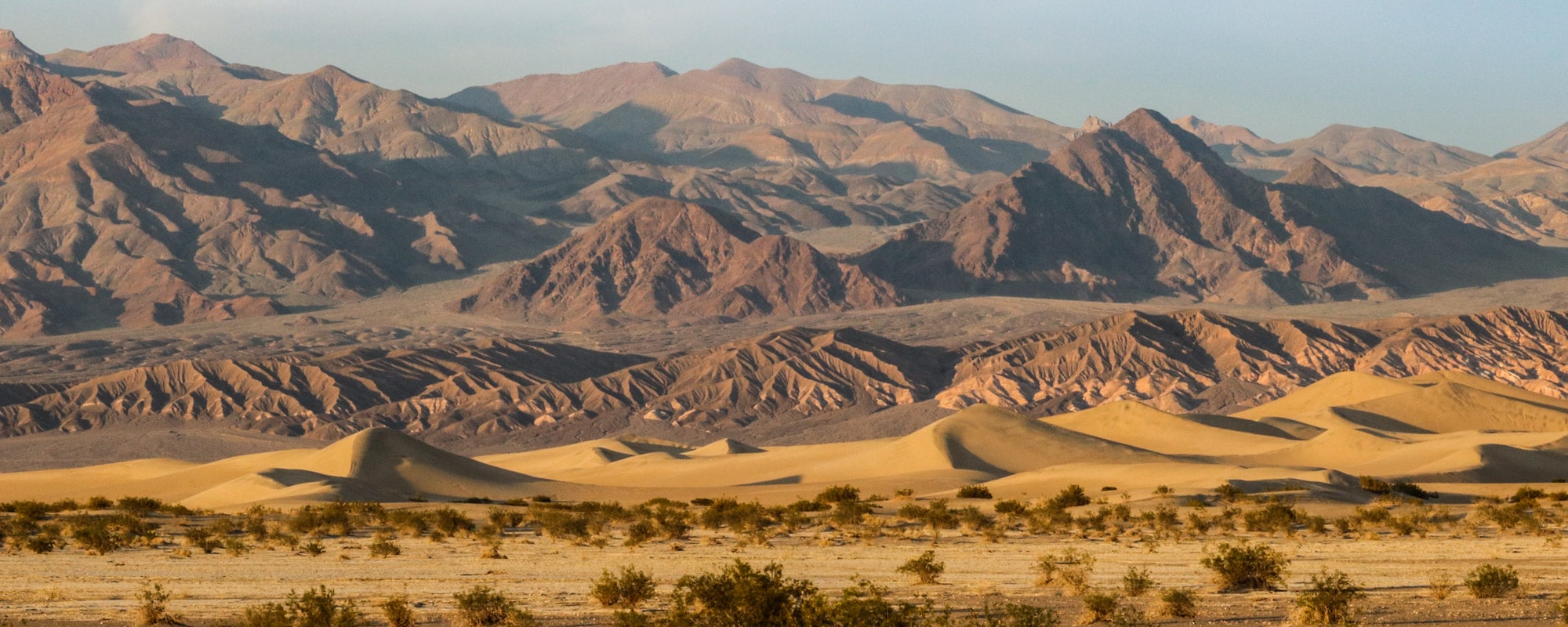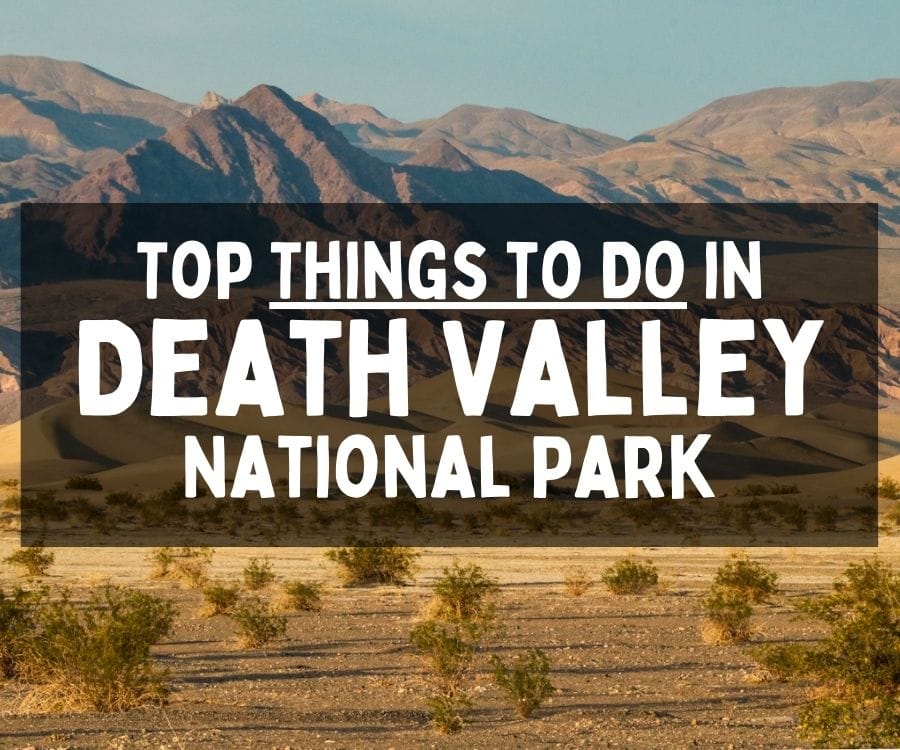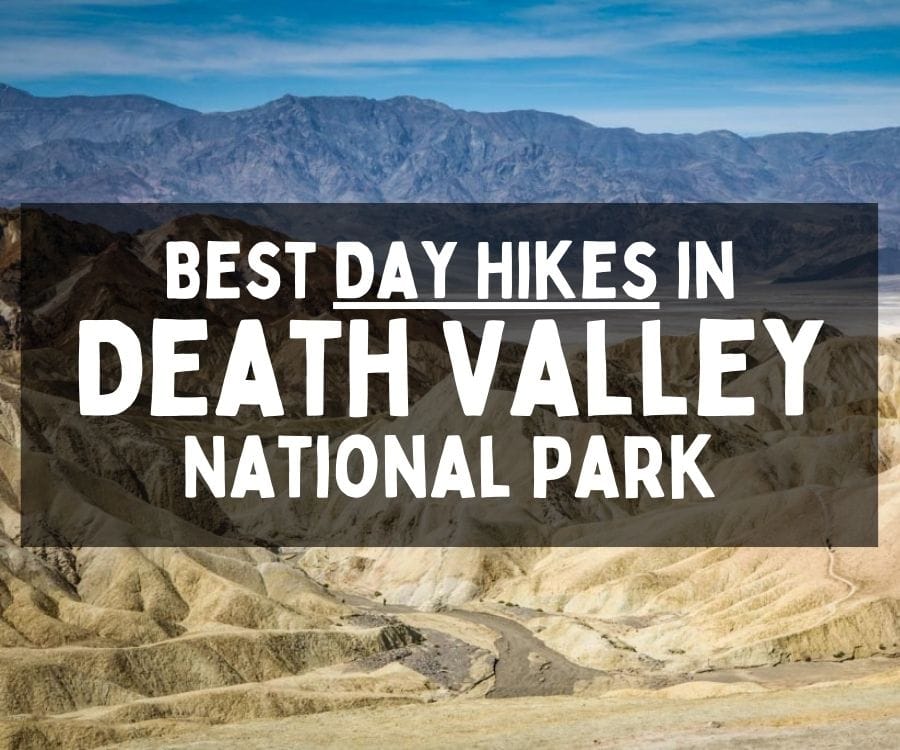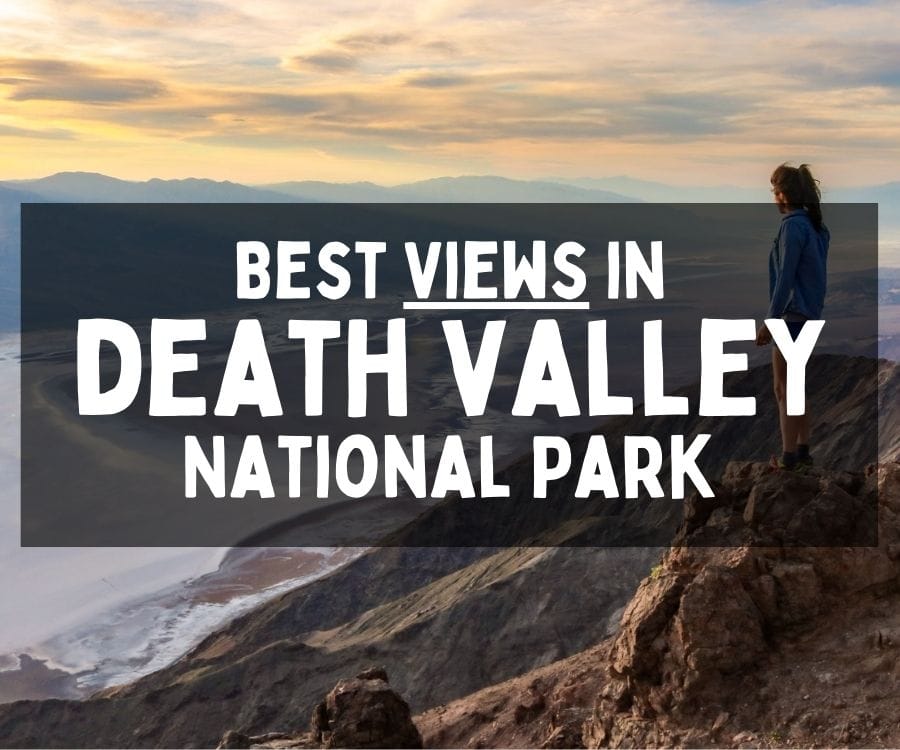Home to the lowest point in North America, Death Valley National Park is also the continent’s hottest and driest place. Visitors can enjoy camping, stargazing and hiking in diverse landscapes such as badlands, sand dunes and salt flats.
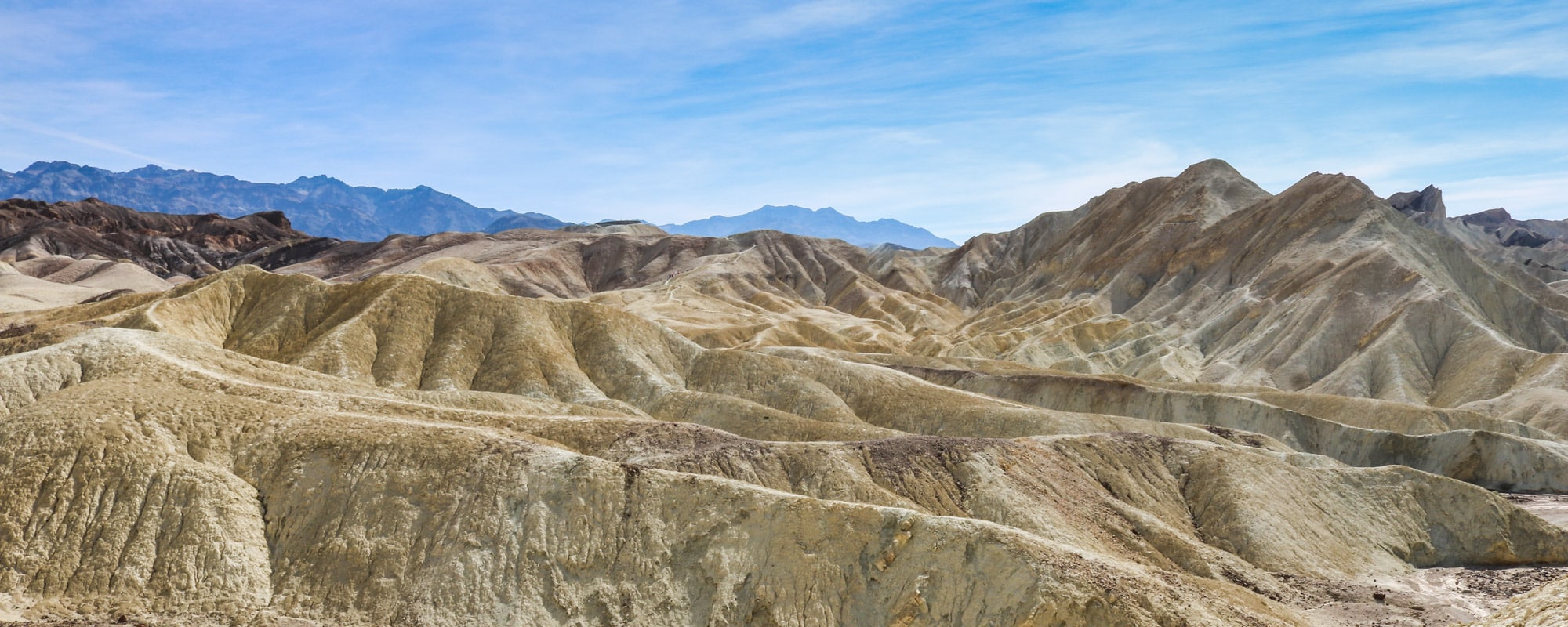
Snowcapped mountain peaks, vast salt flats and trickling salt creeks, tall sand dunes, multicolored canyons and wild badlands make up the impressively varied landscapes of Death Valley National Park, California.
Not your typical desert, Death Valley is a place where superlatives are appropriate. Its sheer vastness is mindboggling, the number of attractions large.
This is a place of absolute extremes. Death Valley National Park encompasses the lowest point in North America—Badwater Basin—and offers views of the highest mountain in the contiguous United States—Mount Whitney.
Situated within the Mojave Desert, it is both the driest and hottest place on the continent. Total annual rainfall averages 2 inches (5 centimeters) and summer temperatures peak at 120°F (49°C) or more. Death Valley is also the largest American national park outside of Alaska (5,219 sq. miles or 13,517 km²).
Despite its seemingly inhospitable environment, Death Valley isn’t “dead” at all. The variety in plant and animal life in the park is actually pretty astonishing.
It is, after all, not because people find the heat uncomfortable that animals do too. Everything that lives in Death Valley, thrives in Death Valley. And there are lots of things that live there.
Wildlife ranges from coyotes, kangaroo rats and bighorn sheep to roadrunners, ravens, sidewinder rattlesnakes, scorpions and tarantulas.
Some animals are endemic to Death Valley, with the pupfish that survive in the salt creeks as the best-known example.
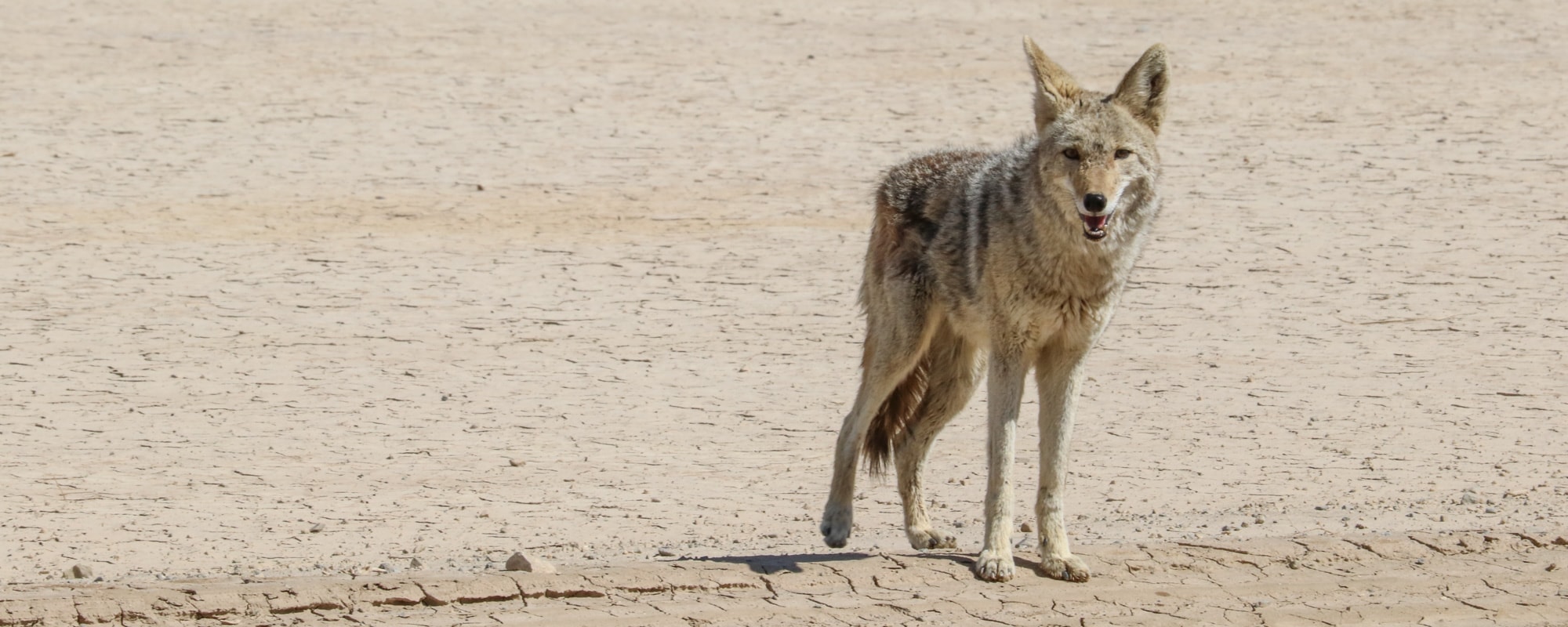
This Death Valley National Park information page contains affiliate links. You can read more about our Terms of Use / Disclosure here.
Highlights of Death Valley National Park
Its sheer size means that Death Valley has a bunch of great attractions. They range from sensational viewpoints and scenic drives to historic mining sites, sand dunes and rock formations.
- Badwater Basin (lowest point in North America at 282 feet (86 meters) below sea level)
- Zabriskie Point (classic viewpoint of the Death Valley badlands)
- Dante’s View (lookout point offering panoramic views of the valley, phenomenal sunsets)
- Mesquite Flat Sand Dunes (most accessible sand dunes in the park, hiking)
- Harmony Borax Works (historic borax mine, exhibits)
- Devil’s Golf Course (expansive area of sharp salt rocks)
- Artist’s Drive (scenic drive through colorful canyons, valley views)
- Salt Creek (natural habitat of endemic pupfish)
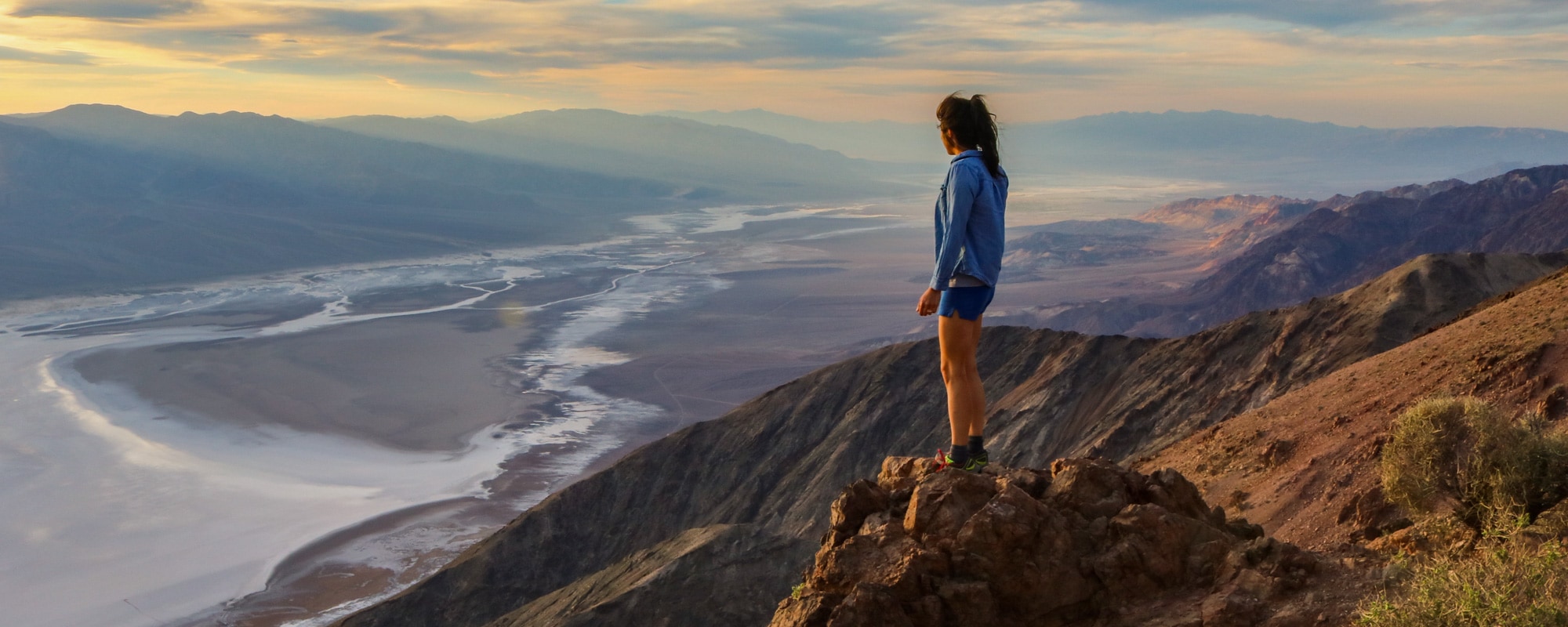
Accommodation Near Death Valley National Park
There are four large campgrounds in Death Valley (Furnace Creek, Sunset, Texas Springs and Stovepipe Wells) and several smaller ones. Except for the Furnace Creek Campground, all are first-come first-served. Check the National Park Service website for a full, up-to-date overview.
Additionally, there are also a handful of lodging options within the national park, including Panamint Springs Resort, The Oasis at Death Valley and Stovepipe Wells Village.
If, somehow, all lodges in Death Valley National Park are fully booked and you don’t want to camp, you can also stay just outside the park.
Booking.comWhen to Visit?
Death Valley National Park is at its prime in early spring. This is when nights still cool off, allowing for relatively comfortable morning hiking.
If you’re lucky, you’ll get to see wildflowers bloom on the hillsides and desert flats. Creeks still flow in spring, which gives you the chance to see the endemic pupfish frolicking in the water.
Summer is when you really don’t want to be in Death Valley. Afternoon temperatures are often higher than your body temperature, which makes being outdoors extremely uncomfortable.
In summer, the only places in Death Valley you’ll want to be are air-conditioned restaurants or saloons, and your car. This eliminates more than half of the fun that the park has to offer.
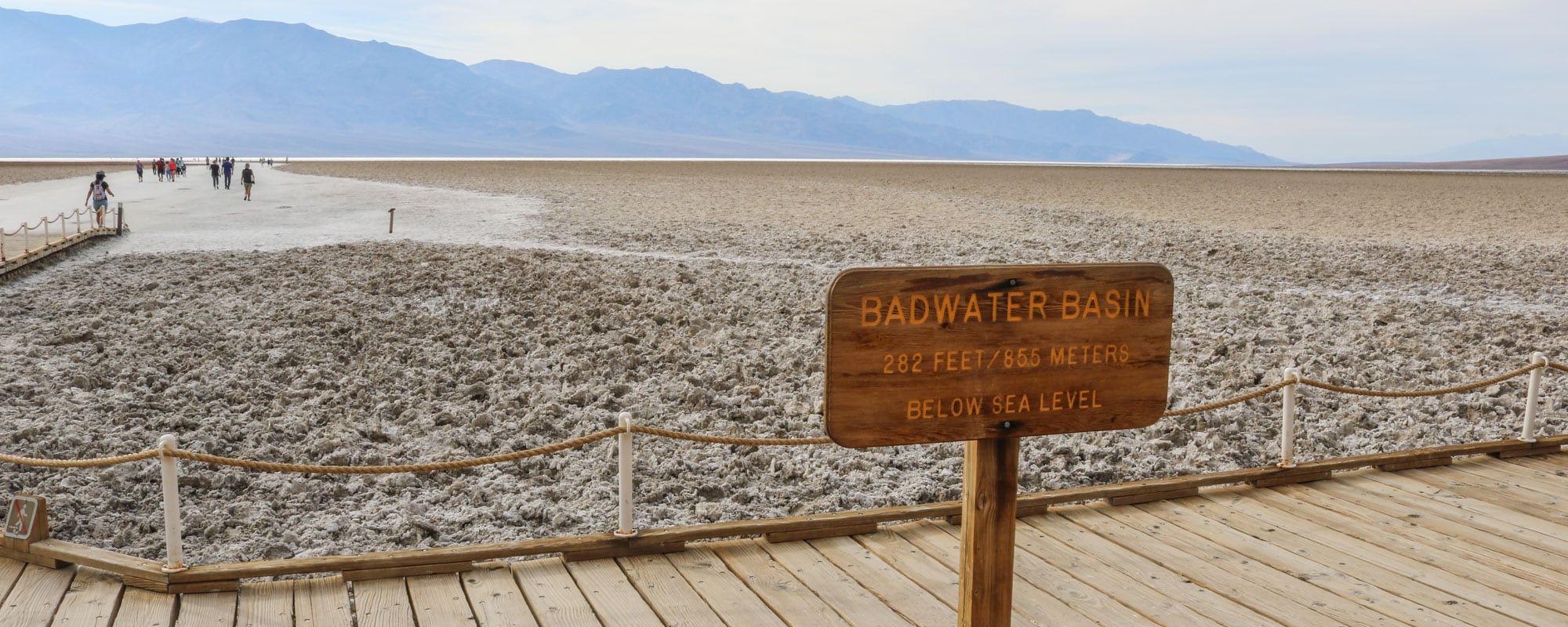
Useful Info
Location: Eastern California
Area: 5,346.9 square miles (3,422,024 acres)
Annual Visitors (2022): 1,128,862
Features: Salt flats, wildlife, historic sites, viewpoints, sand dunes, mountain ranges, canyons
Top Attractions: Zabriskie Point, Mesquite Flat Sand Dunes, Badwater Basin, Dante’s View, Harmony Borax Works, Artist’s Drive
Popular Activities: Hiking, cycling, stargazing, camping, 4-wheel driving
Suggested Stay: 3 days
Campgrounds:
- Furnace Creek Campground (136 sites)
- Sunset Campground (270 sites)
- Texas Springs Campground (92 sites)
- Stovepipe Wells Campground (190 sites)
- Mesquite Spring Campground (30 sites)
- Emigrant Campground (10 sites)
- Wildrose Campground (23 sites)
- Thorndike Campground (6 sites)
- Mahogany Flat Campground (10 sites)
More Information: National Park Service
Nearby National Parks:
- Joshua Tree National Park, California
- Channel Islands National Park, California
- Zion National Park, Utah
Other Desert National Parks:
- Petrified Forest National Park, Arizona
- Saguaro National Park, Arizona
- Great Sand Dunes National Park, Colorado
